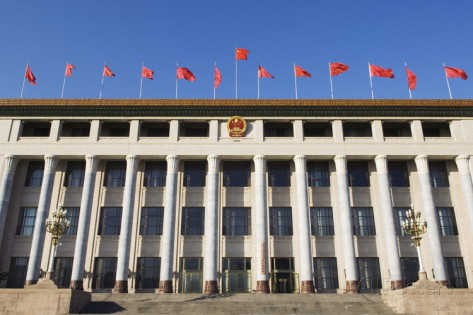
Under a barrage of fallacious arguments from the Bush Administration and the U.S. Congress, Beijing made a tactical retreat on July 21. It “reformed” China’s exchange-rate regime.After a decade in which the yuan had been linked to the U.S. dollar at a fixed rate, China adopted a managed floating-exchange-rate regime. And on the new system’s initial day of operation the yuan was allowed to move from 8.28 to the dollar to 8.11, a 2.1% yuan appreciation.
U.S. Treasury Secretary John Snow hailed these changes as a positive first step. For months he had been piously lecturing the Chinese about why it was in China’s interest to dump its fixedrate system and engineer a yuan appreciation.According to Secretary Snow, these changes would “allow China to more easily and effectively pursue price stability, stabilize growth and respond to economic shocks.”
That latest version of Uncle-Sam-knows-best is laughable. It is not as if China has been making a mess of its economy. Since the yuan’s fix to the dollar in 1995, China’s real growth rate has been second to none, exceeding 8% per year on average. It also passed the Asian financial crisis shock test with flying colors. Real growth was 6% in 1998, the year after the Thai baht collapsed and set off a wave of Asian recessions, and 6.2% in 1999. And all this growth has been accompanied by tame inflation— an average annual rate of 2.25%, less than the U.S. rate.
But it’s not the first time U.S. special interests have prevailed in the name of helping China. During his first term Franklin D. Roosevelt delivered on a promise to do something for silver. Using the authority granted by the Thomas Amendment of 1933 and the Silver Purchase Act of 1934, the Roosevelt Administration bought silver. This and bullish rumors about U.S. silver policies helped to push the price of silver up by 128% (calculated as an annual average) in the 1932-35 period.
Bizarre arguments contributed mightily to the agitation for high silver prices. One centered on China and the fact that it was on the silver standard. Silver interests asserted that higher silver prices—which would bring with them an appreciation in the yuan—would benefit the Chinese by increasing their purchasing power.As a special committee of the U.S. Senate reported in 1932, “Silver is the measure of their wealth and purchasing power; it serves as a reserve, their bank account. This is wealth that enables such peoples to purchase our exports.”
Things didn’t work according to Washington’s scenario. As the dollar price of silver and of the yuan shot up, China was thrown into the jaws of depression and deflation. In the 1932-34 period gross domestic product fell by 26% and wholesale prices in the capital city, Nanjing, fell by 20%. In an attempt to secure relief from the economic hardships imposed by U.S. silver policies, China sought modifications in the U.S. Treasury’s silverpurchase program. But its pleas fell on deaf ears. After many evasive replies the Roosevelt Administration finally indicated on Oct. 12, 1934 that it was merely carrying out a policy mandated by Congress. Realizing that all hope was lost, China was forced to effectively abandon the silver standard on Oct. 14, 1934, though an official statement was postponed until Nov. 3, 1935. This spelled the beginning of the end for Chiang Kaishek’s Nationalist government.
History doesn’t have to repeat itself and probably won’t. After all, a significant yuan appreciation against the dollar today would result in a nasty deflationary impulse, as it did in the 1930s. For example, an appreciation in the yuan of 20%—a number tossed around by many Washington politicos— would generate a 16% deflationary impulse. This would completely sink China’s banking system and spread untold hardship among China’s 800 million restless rural residents.
Beijing knows this. Perhaps this explains why the People’s Bank of China chose to adopt the type of “flexible” monetary setup employed in Singapore. Since 1981 the Singapore dollar’s exchange rate has been managed against an undisclosed basket of currencies.Under Singapore’s unique version of a managed floating exchange rate the Singapore dollar has shadowed the U.S. dollar. Indeed, today’s exchange rate of 1.67 to the U.S. dollar is almost exactly the same as the average value in 1991 and 1999.
China’s choice of Singapore’s basket approach to managed floating could portend a wise combination of emollient rhetoric with a realistic defense of China’s economic interests. For yuan bulls it could mean some pretty big disappointments. The ones who are taking out dollar loans to buy and hold yuan are incurring significant carrying costs while waiting in vain for a payday.
Author Steve H. Hanke

0 responses on "Beijing’s Tactical Retreat"